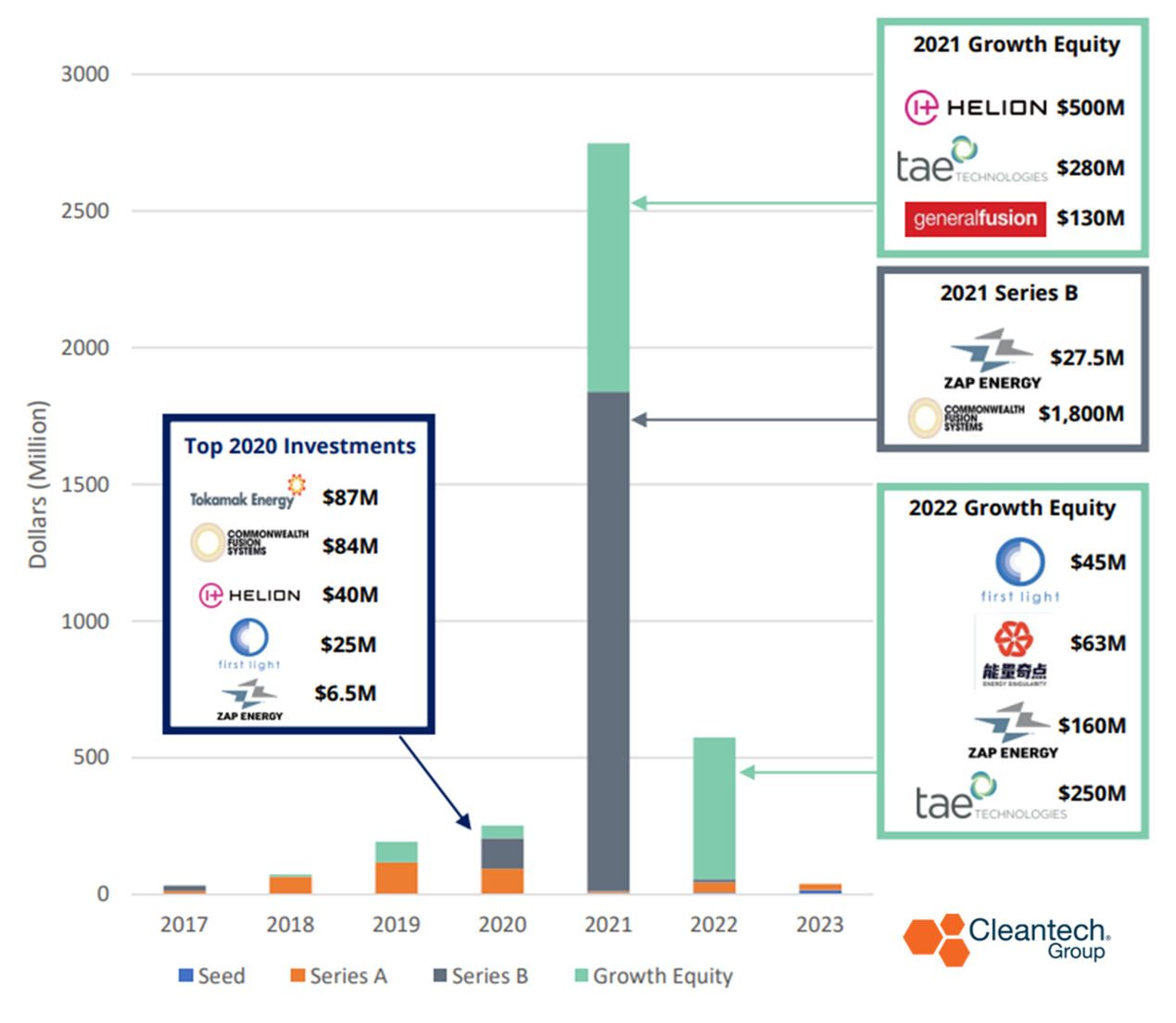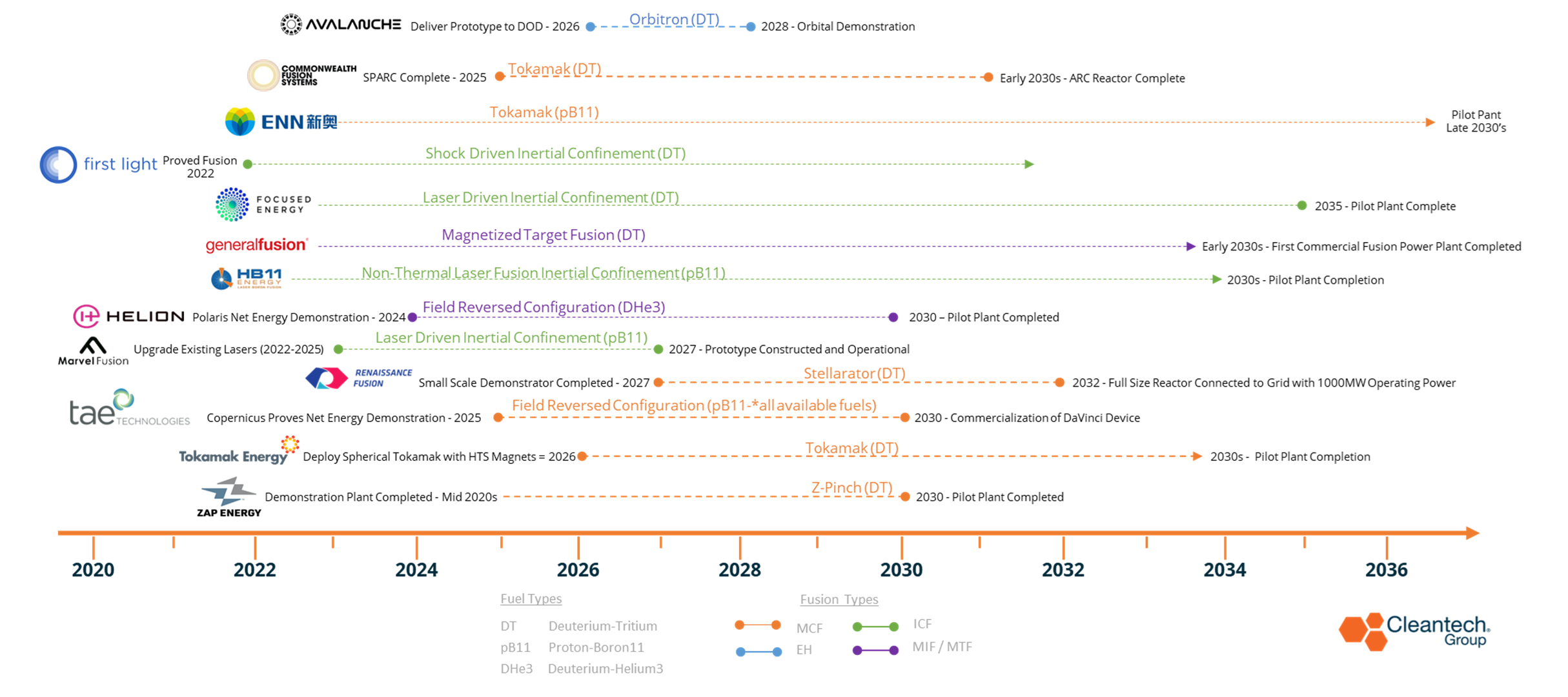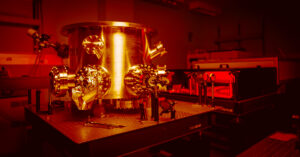Nuclear Fusion: Accelerating Pathways to Commercialization
An Introduction to Nuclear Fusion
Nuclear fusion is when two lighter atoms fuse together to produce a heavier atom releasing energy because of the mass lost in the process. This process differs from fission where larger atoms are split into smaller ones, and energy is released. If fusion can occur in controlled environments, where more energy is generated than put in (called ignition), the net energy can then be harnessed to create clean, low carbon sources of electricity.
In many cases, fuel sources like deuterium and tritium mixtures which are isotopes of the element hydrogen, are used. However, other fuel types such as proton-Boron11 or deuterium-helium3 are also being tested. Atoms must move at incredibly fast speeds to fuse so very high temperatures upwards of 50 million °C are often required. At these temperatures, plasma is created, which is when the matter gets so hot that atoms lose their electrons and separate from the nuclei.
If fusion is sustained, the heat and energy generated from the reaction can power a turbine to produce electricity and feed directly into electrical grids to support power generation. Unlike fission, there is extremely little, if any, radioactive waste and few underlying security threats from utilizing widespread fusion power given that if there were any challenges controlling the systems, the reaction would fizzle out if disrupted instead of having a nuclear meltdown as a fission reactor might.
Why Nuclear Fusion?
Nuclear fusion has the potential to provide limitless, virtually carbon-free baseload power and it avoids the hazards of nuclear fission. Additionally, when compared to renewables, it has the potential to provide almost limitless, emission-free power with a capacity factor of over 90%. It also overcomes many of the challenges that other renewables have related to intermittency and energy storage.
Recently, nuclear fusion has been generating more interest following the announcement that the Lawrence Livermore National Laboratory (LLNL) achieved the first scientific breakeven controlled fusion experiment. This is incredibly significant because reaching net energy gain, where more energy is released from the reaction than put in, is the key principle behind sustaining the fusion reactions and harnessing the released energy to create electricity.
Although fusion can easily seem like a panacea to the worlds’ energy crisis and reliance on fossil fuels, it is not without its challenges. Historically, prior to the announcement from the NIF (National Ignition Facility) and the LLNL, fusion technologies had not met their ambitious claims. Many publicly funded organizations like ITER and NIF had experienced delays and were not able to rapidly accelerate their technologies at the scale that private companies backed by private investors have been able to do.
Key Fusion Innovator Deals From the Past Two Years
Private fusion companies have been making significant progress overcoming key scientific and technical challenges such as managing plasma confinement and reaching critical temperature milestones. These achievements have driven further investments into the sector, accelerating the timelines for fusion companies to reach net energy gain and commercial scale. As shown in Figure 1, private sector investments in fusion companies in the past six years have totaled over $4B.
- Commonwealth Fusion Systems raised $1.8B in their Series B round in 2021 after partnering with MIT to support the development of HTS magnets that reach 20T.
- After announcing they were able to reach 100 million °C , Helion raised $500M in their round in 2021 with further $1.7B available after reaching their next specific milestones.
- TAE Technologies raised $250M in 2022 and announced they reached a milestone of 75 million °C and real time plasma control.
- Zap Energy raised $160M in 2022 and have shown a first plasma demonstration and developed their sheared flow stabilization techniques
Figure 1
Private Sector Investments in Nuclear Fusion (2017-2022)
Looking Ahead
As shown in Figure 2, many companies are expecting to reach net energy gain in the next three-to-four years (Fusion Industry Association Survey, 2022) with Helion expecting their net energy demonstration to occur in 2024 and Commonwealth Fusion Systems and TAE expecting to complete their demonstration facilities by 2025. Following these demonstrations, there will be a race to see who can scale their systems accordingly to support power generation.
Figure 2 (click to enlarge)
Anticipated Milestones for Fusion Technologies
Source Data: Fusion Industry Association – The Global Fusion Industry in 2022
Some companies like First Light Fusion, Renaissance Fusion and Kyoto Fusioneering do not anticipate operating fusion systems themselves but are instead creating the technologies and components to work with plant operators and support the growing fusion landscape. As the landscape of innovators in the nuclear fusion industry grows, various business models and component suppliers for technologies like liquid lithium blankets and high temperature superconducting magnets will also continue to grow and develop.





